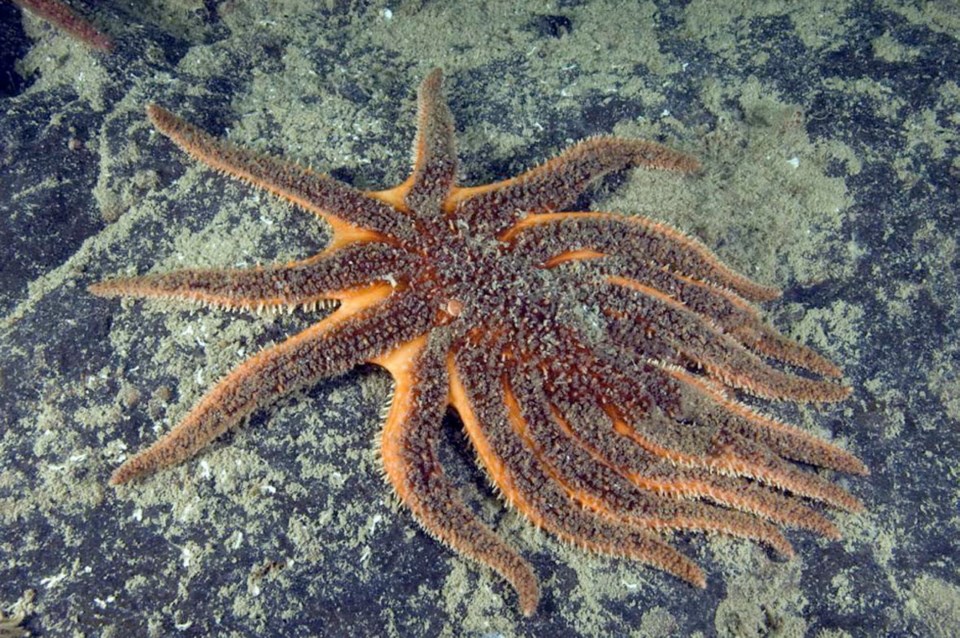Local divers will check on the health of sunflower sea stars in Saanich Inlet in the wake of a devastating die-off of the sea life near Vancouver and Howe Sound.
The disease thought to be responsible has yet to be identified, but it is worrying marine biologists because it’s moving so rapidly.
“It developed quickly and it’s spreading like wildfire,” said Paula Romagosa, a marine biologist and curator at the Shaw Ocean Discovery Centre, which is co-ordinating the monitoring program.
The dead sea stars were first detected in September at Whytecliff Park off West Vancouver and the die-off has spread to sea stars off Bowen Island and Indian Arm.
Divers checked on starfish in Saanich Inlet and off Nanaimo and Comox but have found no sign of the disease, Romagosa said.
“We’re keeping an eye out for any problem with our sea star populations,” she said Wednesday.
“We did several dives over the weekend and started looking at different areas of Saanich Inlet to see what’s there now, compared with what we’ve seen over the last few months.”
Rockfish Divers, a commercial diving operation based in Brentwood Bay, has divers volunteering to do the monitoring at no cost.
Starfish cling to rocks and lie on sand from the shoreline down to depths of 300 metres, but the divers will be able to check down to depths of only 55 metres.
The impact of disease wiping out sunflower sea stars would be immense, Romagosa said.
“Sunflower sea stars are a big predator — they control a lot of other populations. If the main predator is dying off, that can affect everyone down the food chain,” she said.
Sunflower sea stars are the fastest-moving starfish and will eat “just about anything,” Romagosa said. She has seen them eat everything from mollusks and crustaceans to fish swimming near them.
The die-off “is an indicator that something is not quite right in the oceans so it’s critical that we find out what it is before the disease spreads.”
Sunflower sea stars can have up to 24 arms. When they’re healthy, their bodies and arms are puffy. The disease leaves them looking emaciated, Romagosa said. “The whole thing decomposes.”
“The disease progresses so quickly that by the time the sea stars are taken into the lab, they’ve disintegrated. There hasn’t been much material to test.
“We’re still trying to figure out what’s happening.”



